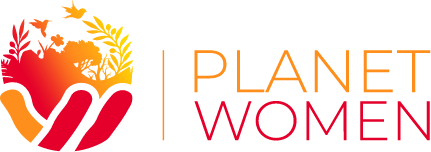Hope in the Face of Steep Climate Impacts in the Colorado River Basin
This story is from Planet Women’s 2022 Annual Report.
The Salt River, a tributary of the Gila River in the Colorado River Basin, runs through the Tonto National Forest in Arizona. © Sam Goodgame/Unsplash.
In the Colorado River Basin, Planet Women is bringing together women from Indigenous and other local communities, and across generations. Together, we are collaborating on solutions to protect the river, and the people and biodiversity that depend on it. With our partners, we are creating space to exchange stories and share wisdom. And, we are funding creative ideas that will have a local and regional impact.
The Colorado River runs 1,450 miles from its headwaters in the Rocky Mountains to Northern Mexico, where it feeds into the Sea of Cortez. The Delta is the end of this long journey, where the Colorado River deposits rich sediment and freshwater into the salty sea. This ecosystem used to be a lush wetland that covered nearly 2 million acres and offered a home to jaguars, beavers and massive flocks of migratory birds on the Pacific Flyway.
But over the last century, flows in the river have decreased dramatically, largely due to the construction of dams and water diversions to support more than 40 million people who rely on it. Now, only one percent of historic flows make it all the way to the Delta.
In 2022, the Colorado River system reached a crisis point. Extended drought conditions, climate change and over-allocation of river water have severely depleted the system. The largest reservoirs, Lake Mead and Lake Powell, are at record-low levels. Now, state governments, Tribal communities and other key stakeholders are locked in tense negotiations to figure out how to conserve water usage to avoid dropping the reservoirs below critical thresholds.
Estimates suggest that necessary water reductions could equal two to four million acre-feet, which is roughly 30% of the overall flows of the Colorado River in recent years. And these reductions are on top of mandatory reductions in the Lower Basin (Arizona, California and Nevada) as required by the Drought Contingency Plan. This lack of water will have a staggering impact on the many communities, ecosystems and industries across the Basin.
Colorado River west of Moab, UT. © Bernd Thaller.
Fortunately, there is hope for the future. Many communities, NGOs and public agencies from both sides of the U.S.-Mexico border are collaborating to rescue the Colorado River and the biodiversity that relies on it. Planet Women is partnering with organizations like the Indigenous Women’s Leadership Network and Sonoran Institute to invest in women who are leaders in habitat restoration, community building and climate resilience.
Planet Women’s 2022 Impact in the Colorado River Basin:
Provided unrestricted grants to 3 Indigenous-led nonprofits in the U.S.: Indigenous Women’s Leadership Network, The Chapter House and Indigenous People’s Burning Network.
29 passengers and 10 pilots participated in the Colorado River Overflight Project, which uses the power of storytelling to help secure the health of the Colorado River for many generations.
Our all-women group of volunteer Overflight Project pilots flew 19 flights and clocked 50+ hours of flight time from a single-engine aircraft.
6,000 miles were flown over the Colorado River Basin, equivalent to 90,000 football fields!
Hosted a storytelling workshop for 136 writers to grow their nature writing skills. Attendees were from the Colorado River Basin or inspired by the Basin.
Funded restoration work in the Colorado River Delta in Baja California and creative water conservation solutions in City of Tucson.
There’s so much more to come in 2023 and we need you to help grow this work! Please consider joining The Ripple, Planet Women’s new membership program, or making a one-time gift.


